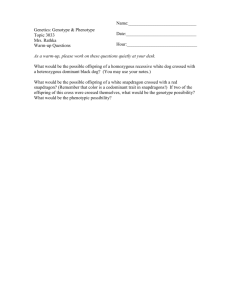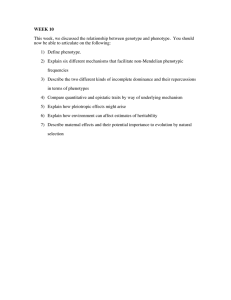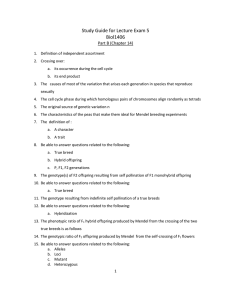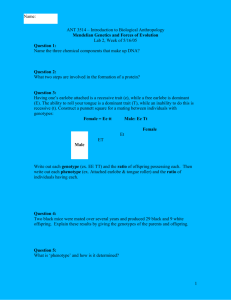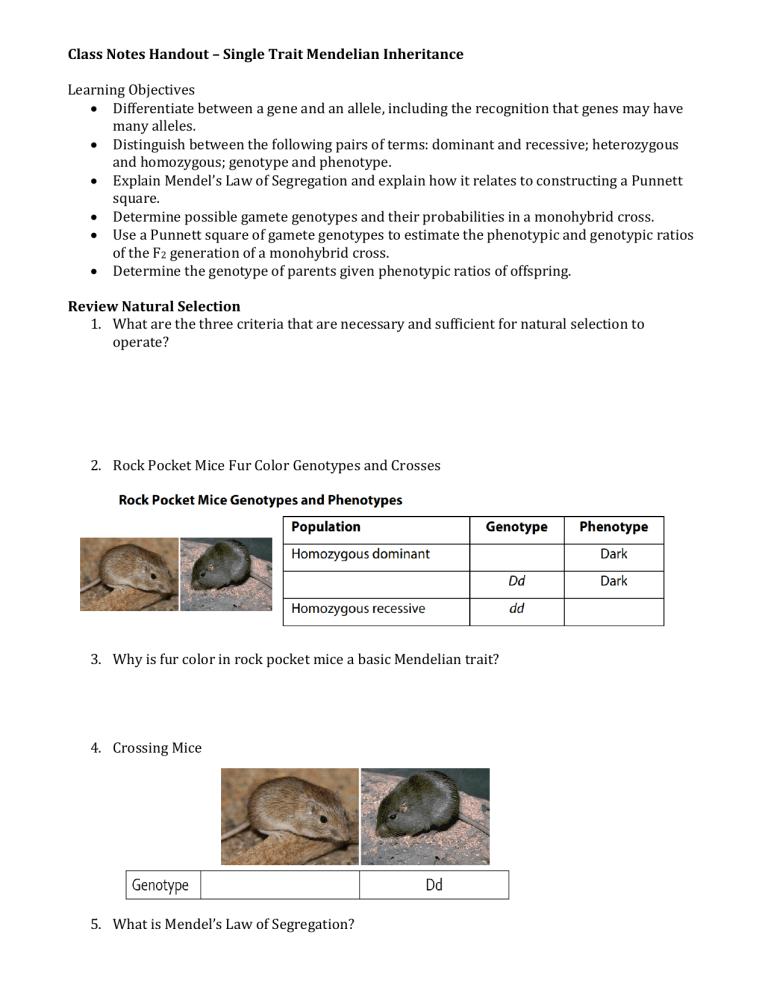
Class Notes Handout – Single Trait Mendelian Inheritance Learning Objectives • Differentiate between a gene and an allele, including the recognition that genes may have many alleles. • Distinguish between the following pairs of terms: dominant and recessive; heterozygous and homozygous; genotype and phenotype. • Explain Mendel’s Law of Segregation and explain how it relates to constructing a Punnett square. • Determine possible gamete genotypes and their probabilities in a monohybrid cross. • Use a Punnett square of gamete genotypes to estimate the phenotypic and genotypic ratios of the F2 generation of a monohybrid cross. • Determine the genotype of parents given phenotypic ratios of offspring. Review Natural Selection 1. What are the three criteria that are necessary and sufficient for natural selection to operate? 2. Rock Pocket Mice Fur Color Genotypes and Crosses 3. Why is fur color in rock pocket mice a basic Mendelian trait? 4. Crossing Mice 5. What is Mendel’s Law of Segregation? 6. Complete the table Mouse Genotype (diploid) Possible Gamete Genotypes (haploid) Dd 7. Determine genotypic and phenotypic ratios of offspring resulting from this cross Genotype Ratios of Offspring Phenotype Ratios of Offspring 8. Practice Problems Genotype Ratios of Offspring Genotype Ratios of Offspring Phenotype Ratios of Offspring Phenotype Ratios of Offspring 9. Branch diagrams for the above problems 10. Tay-Sachs is a disease that is caused by a recessive allele. If a man and a woman who are carriers have children, what is the probability that the child will have Tay-Sachs disease? 11. How can we determine the genotype of an individual who displays the dominant phenotype? 12. Explain the multiplication rule. 13. You mate a pigmented male alligator to a female albino alligator. The clutch of baby alligators includes both pigmented and albino individuals. What is the genotype of the father? 14. If you cross mice and find that ¾ of the offspring are black and the other ¼ are tan, what are the genotypes of the parents? 15. Imagine you crossed one of the tan F1 offspring from the previous question with a truebreeding black mouse. A. What does true-breeding mean? B. What are the expected genotypic and phenotypic ratios of the F2 offspring? Assignments ▪ Reading for Monday: pp. 219 (from "The Law of Independent Assortment") - 222, 228 - 231 (stop at "Multifactorial Disorders) ▪ 2 MB assignments due Monday, one due Wednesday, one due Friday ▪ Pre-labs due in lab on Mondays


